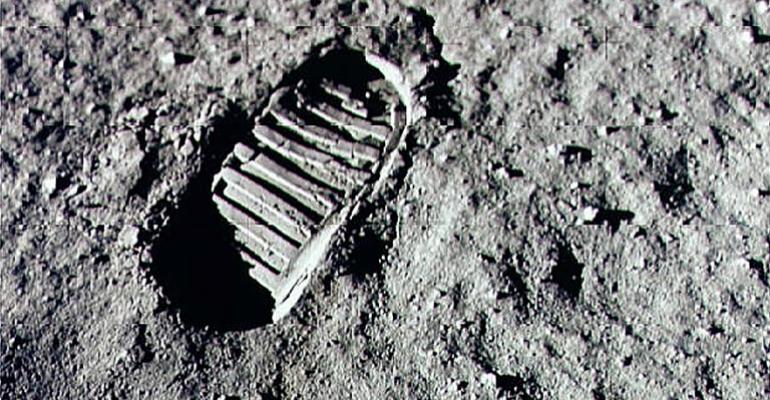The definition of “risk capital” varies greatly depending on context.
In the world of private equity, risk capital refers to the funds used for speculative, high-risk, high-reward investments. Depending on the success of the investment, it can either earn spectacular returns or dwindle to a fraction of the initial amount.
In the charitable world, venture philanthropy applies the same concepts of high risks and high rewards to social (rather than financial) returns on investment. For a number of reasons, philanthropy can be the optimal place for taking speculative “moonshots.”
Two other primary tools for effecting social and environmental change are government and business—both of which are inherently limited in their ability to take big risks. When it comes to performance, government is ultimately accountable to the electorate and business to the shareholders. Taking huge risks to tackle huge problems isn’t usually part of their DNA.
“Philanthropy should be taking much bigger risks than business,” said Bill Gates. “If these are easy problems, business and government can come in and solve them.”
Optimal Place for Moonshots
As opposed to government or business, philanthropy is uniquely unaccountable for the performance of donated funds. This means that donors have tremendous freedom to take big risks in experimenting to find solutions to the world’s most difficult problems.
Recently, much has been written about how this lack of accountability has led to greater income inequality and the misuse of philanthropy to achieve private goals. Nonetheless, for better and worse, grant-making is essentially accountable to no one.
Usually, philanthropic capital is money that’s no longer owned by the donor, having been transferred to a separate Internal Revenue Code Section 501c (3) nonprofit organization that actually owns the funds—such as a foundation or donor-advised fund (DAF).
In making such a contribution, the donor has already determined that the funds aren’t needed to support personal, family or lifestyle goals. The funds will never return to the donor’s balance sheet. This is a perfect category of funds with which to take risks.
Opportunity for Impact Investing
Philanthropic donors also can take some risks with the investment of their philanthropic capital by exploring impact investing, which seeks both financial and social returns on investments.
Unlike grant-making, impact investing with foundation or DAF capital carries with it the fiduciary responsibility to manage the funds with due care and to make prudent investments. There are many opportunities to engage in impact investing in companies that advance a philanthropic mission while also generating solid financial returns. Legal and tax advice should be sought before proceeding.
A Wealth of Worthwhile Risks
Thousands of nonprofit organizations are taking big risks in an effort to solve pressing regional, national and global challenges. For example:
The Drugs for Neglected Diseases Initiative (DNDi) is an international nonprofit that develops new treatments for neglected diseases that affect tens of millions of people—primarily in developing countries. Because of the huge costs needed to develop new treatments, combined with the economics of pharmaceutical R&D, production and distribution, the vast majority of drug R&D investments don’t benefit neglected communities around the world, particularly people in poor countries who don’t represent a lucrative market. These are high-risk investments with potentially outsized human and social benefits. DNDi has developed treatments for malaria, African sleeping sickness, leishmaniasis, Chagas disease and pediatric HIV.
10.10.10 convenes 10 successful entrepreneurs for 10 days to turn 10 “wicked problems” into business opportunities for profit and impact. It encourages each entrepreneur to create a new venture that delivers a game-changing new product or service. It focuses on the areas of health, water, food, energy, learning, infrastructure waste, security and climate change. In its first six sessions, it’s helped launch eight promising for-profit ventures.
PRIME Coalition partners with philanthropists to invest charitable capital in companies that combat climate change and have a high likelihood of achieving commercial success—but would otherwise have a difficult time raising support. Philanthropists can use program-related investments, recoverable or traditional grants, or support operating overhead.
All risk, no matter the context, must be carefully evaluated and managed. In Risk, philanthropy, go hand-in-hand, I explored how philanthropists can evaluate and manage their unique tolerance for risk. With the proper legal, tax and philanthropic advice, many philanthropists can take smart risks and potentially achieve outsized returns with their philanthropic dollars.
Ford Foundation CEO Darren Walker said: “We need to expand our imaginations and our tools if we want to tackle the large-scale problems facing the world today.”
Bruce DeBoskey, J.D., is a philanthropic strategist working across the U.S. with The DeBoskey Group to help families, businesses, foundations, and family offices design and implement thoughtful philanthropic strategies and actionable plans. He is a frequent keynote speaker at conferences and workshops on philanthropy. Visit deboskeygroup.com





